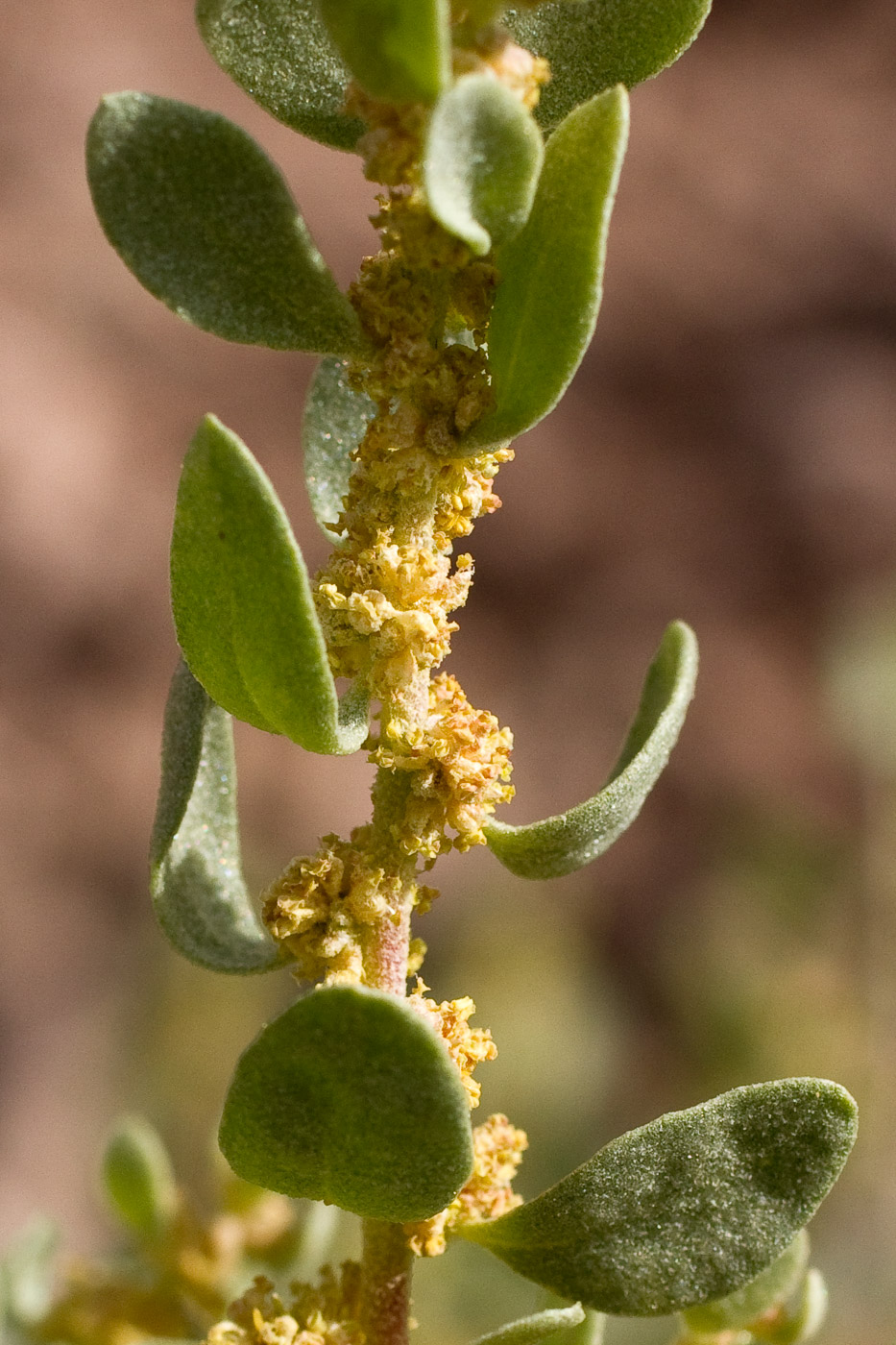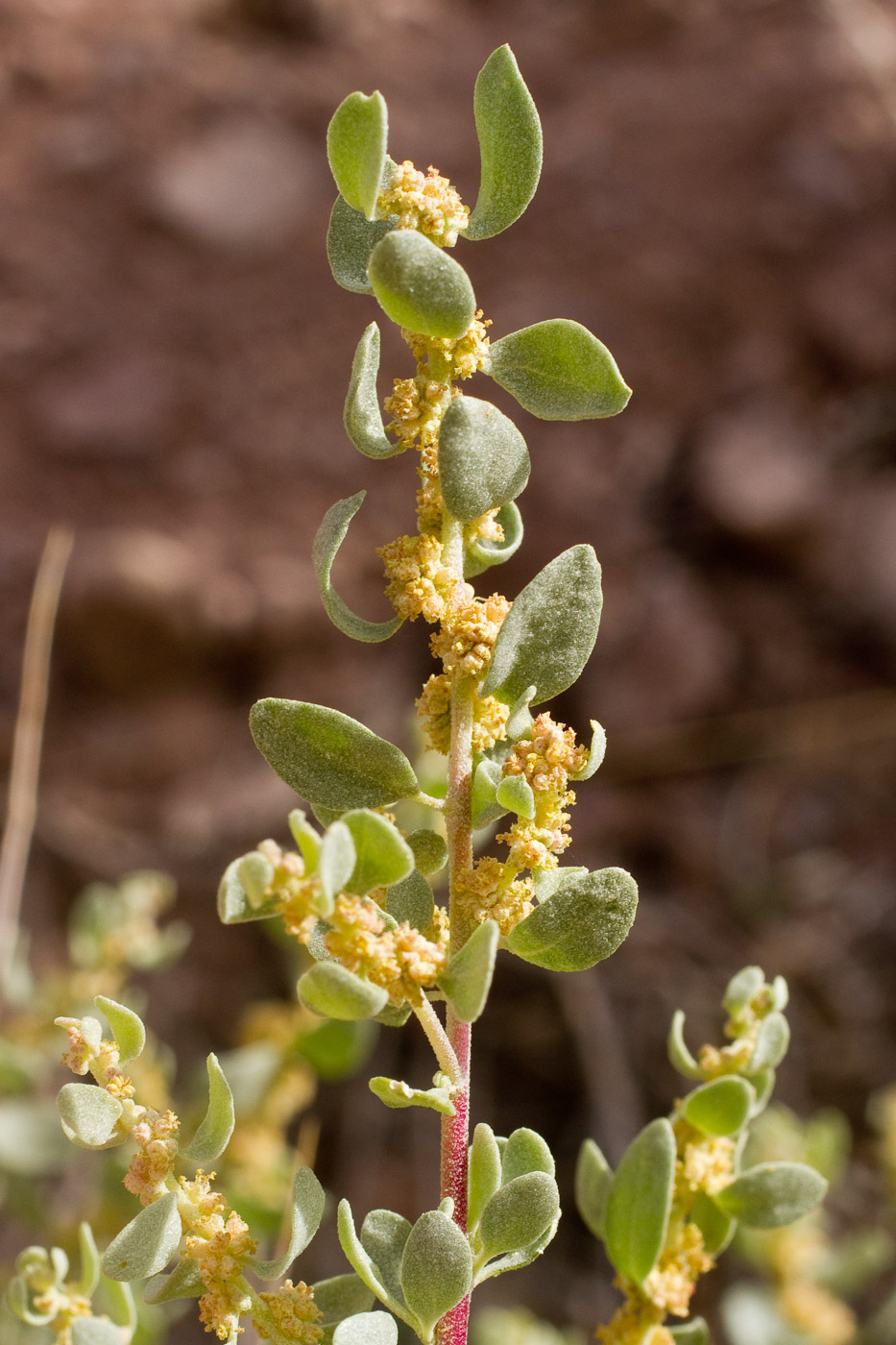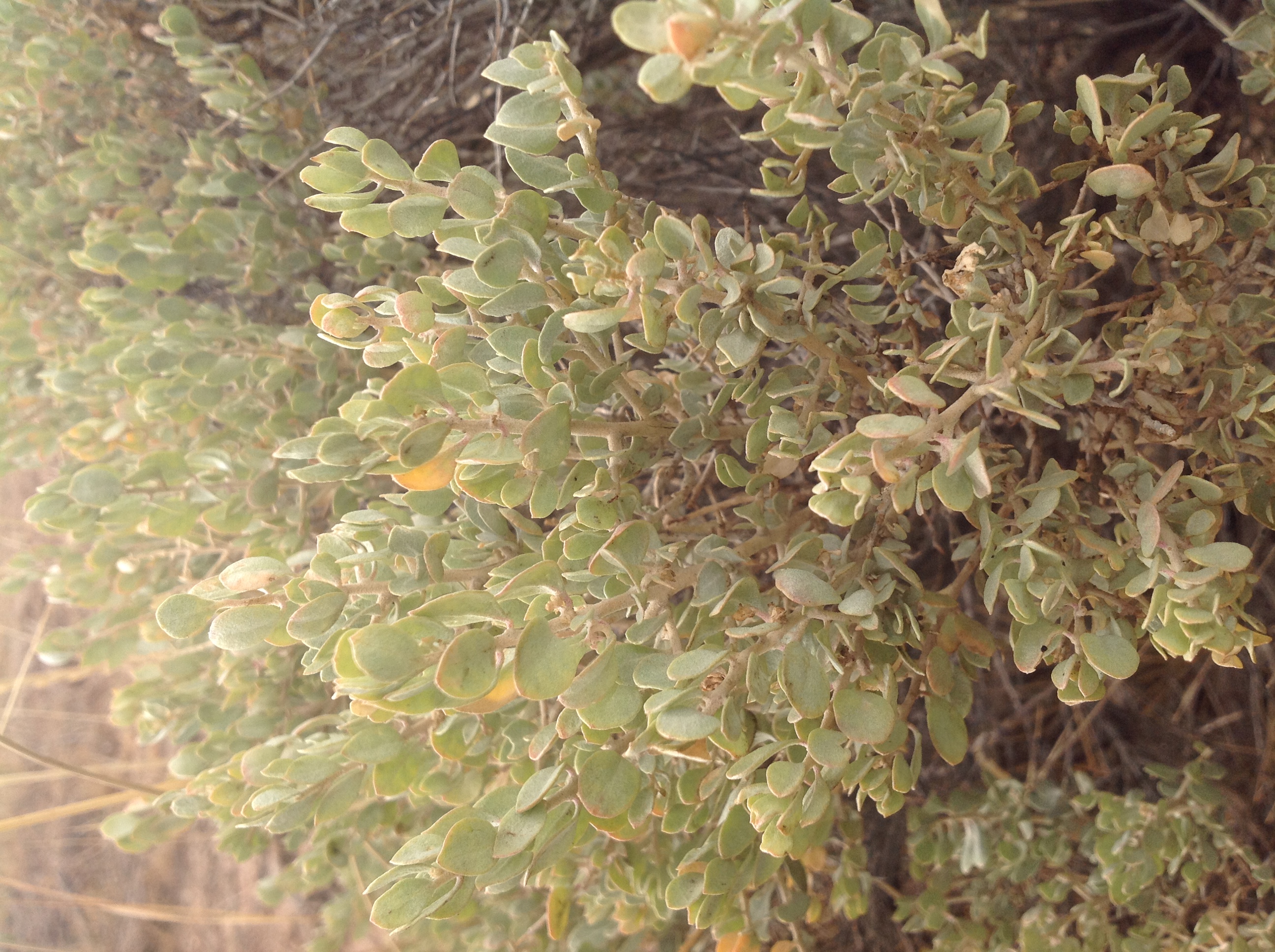Selected Plants of Navajo Rangelands
Shadscale

Shadscale is a low-growing shrub (1 to 3 feet) with spine tipped branches. It occurs in arid climates at elevations from 4,000 to 7,000 feet. It grows on dry slopes, flat areas, ridges, and valley bottoms.
Shadscale can form almost pure stands in some locations. It is resistant to overgrazing and is drought tolerant. Tolerance to drought is achieved through partial shedding of leaves; this reduces water loss during severe moisture stress.
Shadscale is used by all classes of livestock, as well as by mule deer, for forage. It is used mostly during winter and spring for browse. Late spring or summer grazing, especially if intensive, is injurious. The fruits provide food for game birds and songbirds, and the seeds of shadscale remain on the plant throughout the winter, enhancing its nutritional value.
Traditional uses include grinding the fruits of shadscale into flour.



©2018 NMSU Board of Regents.
Individual photographers retain all rights to their images.
Partially funded by the
Western Sustainable
Agriculture Research and Education Program
(westernsare.org; 435.797.2257),
project EW15-023.
Programs and projects supported by Western SARE are
equally open to all people.